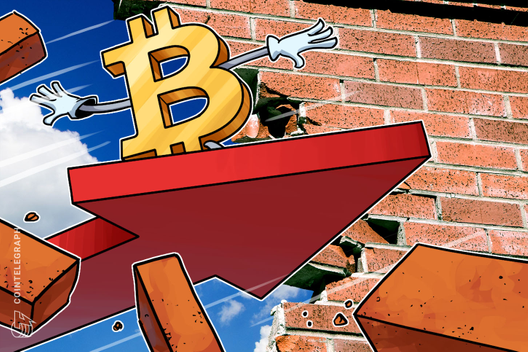
Understanding the new IRS guidance for cryptocurrency.
The United States Internal Revenue Service (IRS) is continuing to focus its efforts in cryptocurrency. After sending a recent enforcement letter, the IRS has released two new pieces of guidance for taxpayers who engage in transactions involving digital currency.
The new guidance includes Revenue Ruling 2019–24 and FAQs, including guidance for using the specific identification method. Additionally, the IRS has published a new draft for form 1040 Schedule 1, including a broad declaration regarding crypto holdings or trade.
Here is a breakdown of these publications.
Revenue Ruling 2019–24: airdrops and hard forks
So, what are airdrops and hard forks, and what do they mean for the tax obligations of crypto holders?
In short, an airdrop occurs when a company distributes its tokens to a user’s wallet, free of charge, in order to raise funds, and in certain other cases, such as after hard forks. A hard fork is when nodes of the newest version of a blockchain creates a permanent separation from the previous version, creating a “fork” in which one path follows the new and upgraded blockchain, while the other follows the old path.
In Bitcoin (BTC), a hard fork is the result of changes in the blockchain rules, sharing a transaction history with Bitcoin up to a certain time and date. The most famous hard fork occurred in August 2017, when some Bitcoin developers and users decided to initiate a hard fork known as Bitcoin Cash (BCH).
The new IRS guidelines distinguish between hard forks and airdrops, stating that not every hard fork should be treated as an airdrop. Those who received new currencies in a hard fork are considered as having received them through airdrop and should report it to the IRS as gross income.
The new ruling also acknowledges the possibility that a taxpayer did not receive an airdrop, detailing that if a taxpayer receives new currency from an airdrop into a wallet managed by an exchange that does not support the airdropped currency, the taxpayer is off the hook. But, if the exchange later ends up supporting that airdropped crypto, the taxpayer is considered to have received the new currency at that time and is therefore liable to taxation.
While the IRS has made significant steps in regulating crypto, the new guidance raises questions about the request to tax airdrops when the crypto holder receives them as gross income, unlike regular crypto which it’s taxable events occur only on selling or exchanging.
Frequently asked questions
Back in 2014, the IRS issued Notice 2014–21, which describes how existing general tax principles apply to transactions using digital currency. This notice contained 16 Q&As, which have now been amended and added to the 2019 ruling, resulting in a whopping 43 questions and answers that cover the entirety of crypto taxation issues.
These are the main issues you should know:
1. Understand what Fair Market Value is:
Fair Market Value (FMV) is typically defined as the selling price for an item to which a buyer and seller can agree.
Cryptocurrency value is determined by the cryptocurrency exchange and recorded in U.S. dollars. However, when it comes to peer-to-peer (P2P) transactions or other transactions not facilitated by an exchange, the FMV is determined according to the date and time at which the transaction was recorded on the blockchain.
2. Determine the cost basis:
Cost basis is the original value of an asset for tax purposes. For digital currencies, the cost basis is the amount you spent to acquire the digital currency, including fees, brokerage commissions from exchanges, and other acquisition costs in U.S. dollars.
Your adjusted basis is your basis increased by certain expenditures and decreased by certain deductions or credits based on marital status, income, etc. To calculate an accurate cost basis, you must first determine which units of currency were sold, exchanged, or disposed of and match the buying cost for every unit sold.
3. Choose the calculation method carefully:
Here is the big news: For the first time, the IRS has clarified the preferable method of calculation for cryptocurrency, advising to use the “specific identification” method. This means identifying the exact unspent output Bitcoin transaction (UTXO) you have sold out of all the Bitcoin you had in your wallets, and then calculating your tax liability based on the sale of the actual Bitcoin UTXO.
If you are not using it already, you should use the first in, first out (FIFO) method. This method does not take real-time user activity into consideration. Basically, to calculate in the FIFO method, you need to make a list of all purchases and another list of all sales. Then, to do the matching, take the first item in the purchase list and calculate the tax results as if you sold it at the same price and on the same date as the first sale in the sales list. FIFO results can cause overtaxation, especially if you bought your first Bitcoins in the early years.
To get a complete and accurate report, taxpayers are encouraged to use the specific identification method. This method is used to track individual units of virtual currency. It is applicable only when individual units can be clearly identified to provide a complete report of crypto-asset movements, including addresses, wallets, exchanges, etc.
Taxpayers can identify specific units by unique digital identifiers such as private and public keys and addresses, or with records showing the transaction information for all units of a specific digital currency (such as Bitcoin) held in a particular account, wallet or address. Specific identification must exhibit the date and time each unit was acquired, the cost basis and FMV of each unit at the time of acquisition, as well as the date, time, FMV and sale value or price of each unit when it was sold, exchanged or disposed of.
Related: Crypto IRS Audits: Hire Professionals or Do it Yourself?
4. Save all your documentation:
When compiling a report and filling out the appropriate documentation, taxpayers must report all income, gains and losses incurred by all taxable transactions, regardless of the amount. IRS codes and requirements are to maintain thorough documentation on receipts, sales and exchanges in order to establish validity on their tax returns.
The views, thoughts and opinions expressed here are the author’s alone and do not necessarily reflect or represent the views and opinions of Cointelegraph.
Or Lokay Cohen is the vice president at Bittax, a crypto tax calculation platform. Or has 10 years’ experience with regulation, managing a leading tax consultant firm. She holds a LL.M. law degree, a B.A. in communications and an M.A. in management and public policy. In her work at Bittax, Or promotes the goal of bridging the gap between cryptocurrency and the taxation reality to enable tax reporting under a clear, regulatory framework and specific identification methods.
from Cointelegraph.com News https://ift.tt/2C4qObH






















